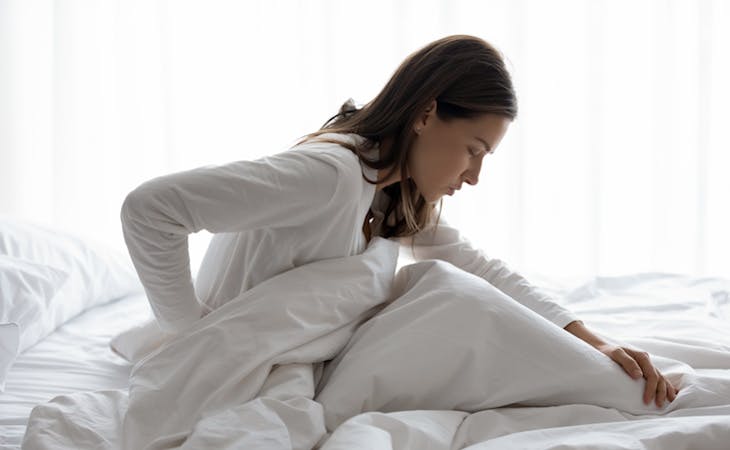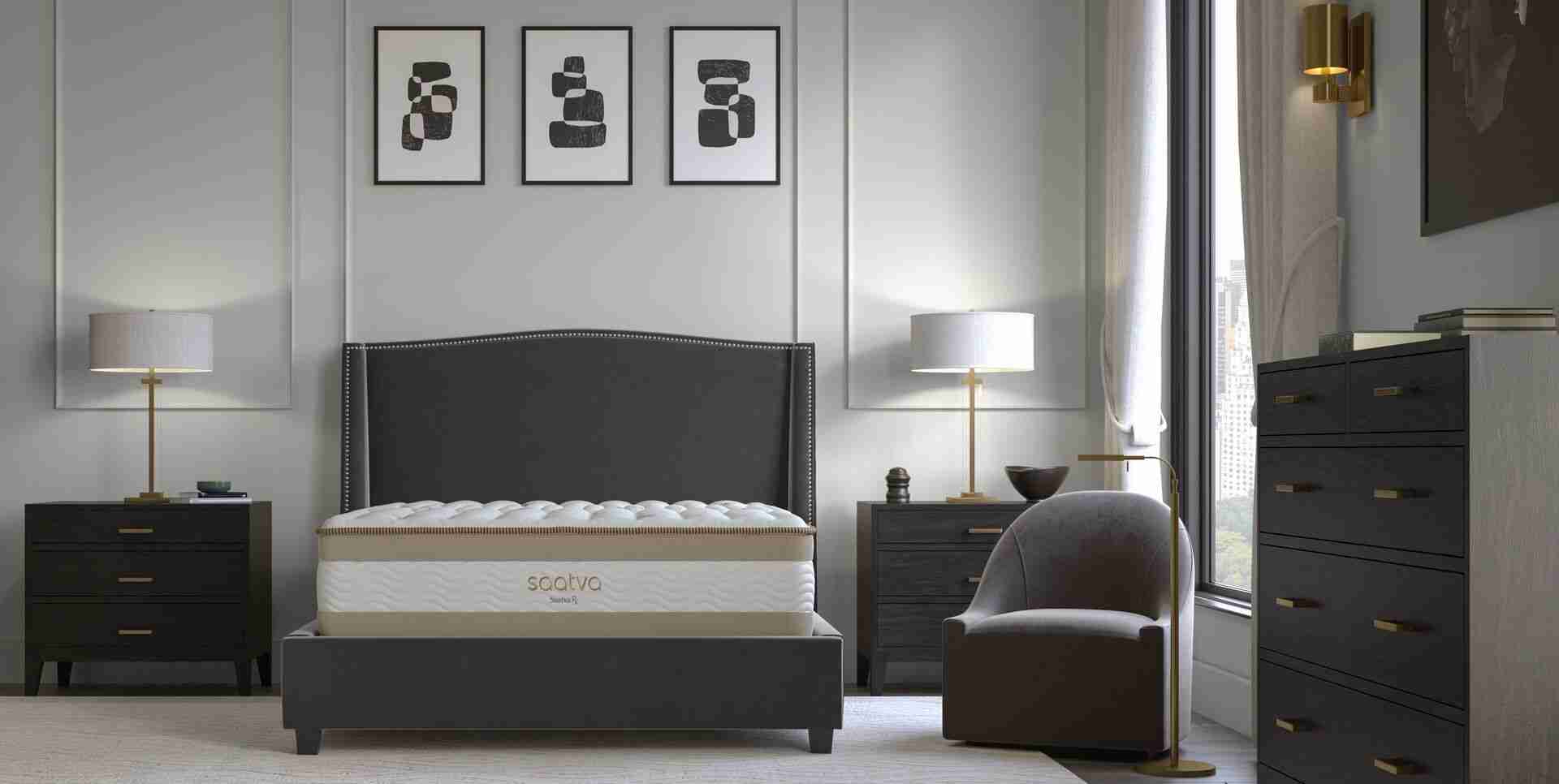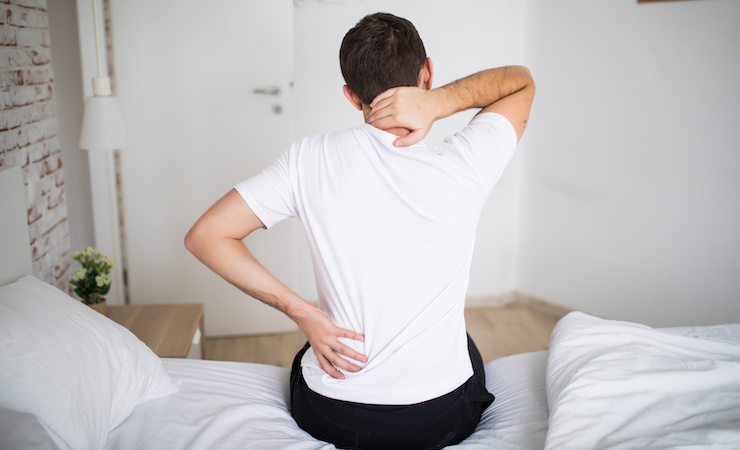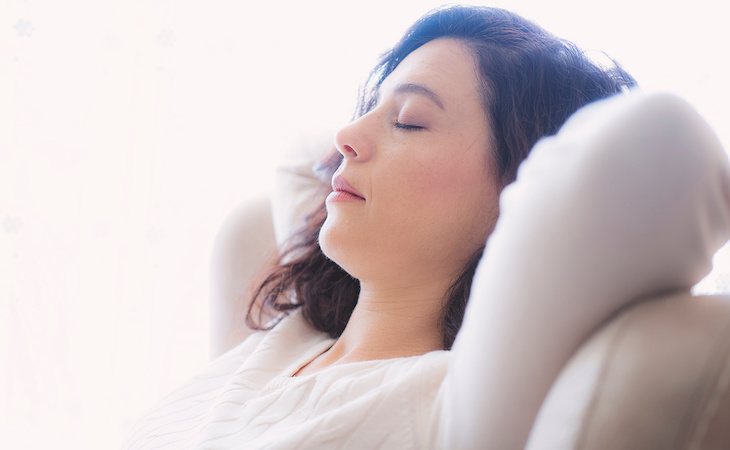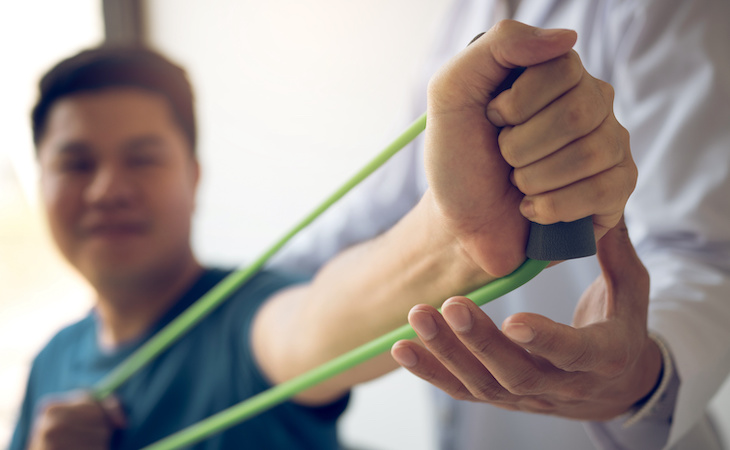Many back conditions—from sciatica to a herniated disc to osteoarthritis—cause pain that makes it difficult to get a good night’s sleep. Scoliosis is yet another disorder that can lead to sleep-disrupting back pain.
Read on to learn more about this condition, get a chiropractor’s advice on how to sleep with scoliosis, and find out how to choose the best mattress for scoliosis.
What is scoliosis?
Simply put, scoliosis is the medical term for a curved spine. Specifically, it’s a sideways curvature of the spine that often begins during the growth spurt before the onset of puberty. It’s a condition that still continues to make experts scratch their heads.
“We do not know the reason that scoliosis develops for some but not for others,” says Alex Tauberg, chiropractor and owner of Tauberg Chiropractic & Rehabilitation in Pittsburgh. “With that said, scoliosis is commonly associated with growth and development, meaning that it usually develops before one reaches skeletal maturity. Scoliosis does seem to have a genetic component and is more common in females, especially during the adolescent years.”
He adds that scoliosis can frequently go unnoticed, “as it can be completely asymptomatic, especially when mild in nature.” But, over time, the degree of scoliosis can advance, resulting in the common symptom of back pain.
“In some rare cases,” Tauberg adds, “internal organ function can be affected if the scoliosis progresses to a large degree.”
Tips on how to sleep with scoliosis
Having trouble sleeping with scoliosis? Follow this advice to improve your sleep.
Using pillows strategically
It turns out that pillows can make or break a good night’s sleep when you have scoliosis. “Using a pillow while sleeping on your side can allow you to either find a more restful position or, for short periods of time, could be used under the apex of the curve in order to help stretch out the opposite side,” says Tauberg. “Furthermore, when sleeping on your side, a pillow in between your knees and elbows can help to take stress off the back.”
Stretch to prevent pain
Stretching is another way to lessen back pain from scoliosis, whether you choose to do it before bedtime or throughout the day.
“Stretching does not seem to stop the progression of scoliosis, however, it can be done to alleviate discomfort,” says Tauberg. “Keeping the back mobile and strong can help prevent pain from arising. Stretches and exercises should be performed under the guidance of a trained professional.”
Experts recommend arm and leg raises, pelvic tilts, and bird-dog moves if you’d like to start a stretching routine for your scoliosis.
Sleep with a back brace
Back braces are often recommended for those with scoliosis. “Back braces can be used to slow or stop the progression of scoliosis,” Tauberg explains. “Essentially, the brace is used to keep an individual’s scoliosis from progressing until they meet skeletal maturity. It can be an effective way to manage scoliosis.”
If you’re intending to wear a back brace to bed, you can choose a lightweight option that mimics a wrap more so than a traditional brace. This can help you feel more comfortable as you sleep. Also, sleeping on your back with a pillow under your legs can feel better as well.
Best mattress for scoliosis
Another way to improve your sleep with scoliosis? Finding the right mattress. While a mattress can’t rid you of scoliosis, a bed that offers pressure relief and provides proper spinal support can help alleviate some of the pain.
Here’s a rundown of the most popular mattress types to help you find your perfect match.
Innerspring
An innerspring mattress is the most traditional mattress type, best known for that classic springy feel. It takes its name from the metal support coils that form the core of the bed. That essential quality of “springiness” is the innerspring mattress’s defining characteristic.
Most innerspring mattresses today also contain layers made with other materials, such as memory foam and latex, for added comfort, performance, and durability. While innerspring mattresses are a perfectly fine choice if you have scoliosis, you may want to check out other, more advanced, mattress types that have different attributes that may appeal to your sleep needs.
Memory foam
A memory foam mattress is one made from viscoelastic foam, a type of high-density polyurethane foam. Memory foam’s distinguishing feature is that it softens in response to heat and pressure, giving it that body-hugging feel. Because memory foam conforms to your body, it helps relieve pressure points and keep your spine in neutral alignment.
According to SleepFoundation.org, memory foam mattresses are frequently recommended to people with scoliosis due to their pressure-relieving abilities. Just keep in mind that some memory foam mattresses are too soft, which can cause you to sink into the bed and leave you in more pain—so it’s better to choose one that’s on the firmer side if you have scoliosis.
Latex
A true latex mattress is made of 100% natural latex derived from the milky sap of the rubber tree, Hevea brasiliensis. Most latex mattresses are not made from a single block of foam. Instead, they are formed from several layers of latex of varying thickness and density.
Latex conforms to your body like memory foam, but it’s responsive and bouncy like innerspring. It adjusts to your curves rather than just sink beneath your weight like some memory foam mattresses tend to do, making it ideal for back pain. (Here’s how to choose the best bed for osteoporosis.)
Hybrid
A hybrid mattress is a cross between two mattress types—typically innerspring and some sort of foam—for a “best of both worlds” sleeping experience. Hybrid mattresses will have thicker upper layers of foam than a traditional innerspring for added pressure relief for your back.
Adjustable air
While other types of mattresses have support cores consisting of foam or springs, adjustable air beds contain individual air chambers that can be inflated or deflated to achieve a precise level of comfort. Being able to adjust the firmness of your mattress can provide increased support to the lumbar spine and help to decrease back stiffness first thing in the morning.
Mattress features for a good night’s rest
Beyond mattress type, there are some features to think through as you seek to find the best mattress for scoliosis.
Pressure relief
When perusing mattresses, you’ll want to land on a mattress that provides good cushioning for the joints. Pressure relief is key for easing scoliosis pain, and the two materials that excel best at this are memory foam and latex. Hybrid mattresses, which have a top, or comfort, layer made of foam, are another good option. You can also add a latex or memory foam topper to an innerspring mattress for added pressure relief.
Firmness
A medium-firm to firm mattress is typically the best mattress for scoliosis. That said, if a mattress is too firm, it won’t allow for proper body contouring—but if it’s too soft, you’ll sink right in, and this may cause more pain.
Lumbar support
Lumbar support in a mattress is a must if you have scoliosis. This type of support specifically targets the lumbar, otherwise known as the portion of the spine above the tailbone. In a mattress, you’ll find lumbar support in the center third, which will help keep your spine in a neutral position as you sleep.
You can find lumbar support in different forms, depending on the type of mattress you choose. Denser foams in the center third of the mattress or an area of reinforced springs are typical methods of lumbar zone enhancement.
Sleep position do’s and don’ts
Proper sleep positioning can help you wake up feeling more refreshed and perhaps even pain-free. Here’s what you need to know about the most common sleep positions.
Side sleeper
According to ScoliSMART Clinics, over 60% of Americans are side sleepers—and many people who deal with scoliosis find this to be a comfy sleeping position. That’s because sleeping on your side is an effective way to keep the spine neutral and straight.
Back sleeper
As ScoliSMART Clinics notes, only 14% of Americans are back sleepers—but this is a highly recommended position for those with scoliosis as it helps to distribute weight evenly across the body. “Sleeping on your back is likely preferable,” adds Tauberg. “This will allow the back to get the most rest.”
Stomach sleeper
People diagnosed with scoliosis should try to avoid sleeping on their stomachs, according to the experts at Sleep Advisor. It can cause your head and neck to twist, which can put additional strain on the spine.
Is the way you sleep contributing to your scoliosis? Here’s what you need to know about the connection between sleep position and back pain.

